Process St Teresa's commission.
The concept cartoon marker rendering
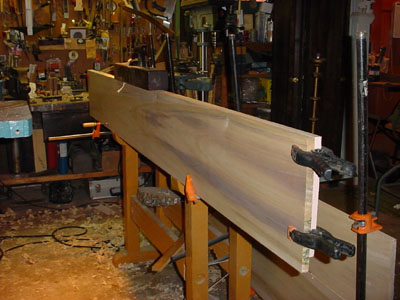
Boards are prepared for the panel. In the traditional manner, poplar boards are joined to make the painting substrate. Plywood was considered, but since the painting is well over four feet in both directions, the seam between multiple panels would be a problem. So following my research into the Renaissance Master's approach, which included a visit to the North Carolina Museum of Art's excellent European collection and a lengthy conversation with one of their conservators, I have rested on poplar boards of between 10 and 16" in width, butt-jointed. Poplar was a common wood for painting panels in Norhtern Europe, which is good for me because it is readily available now. Lime and other fruit trees were prevelant in the South. This shot shows two adjacent boards having the common seam matched with a 24" long wooden-body joiner plane. Here's the same tools and method used in the 15thc. In the lower corner are the first two board glued and clamped up.
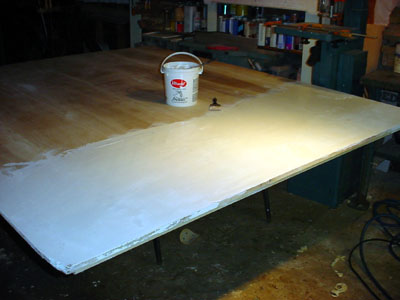
The panel is assembled and the seams planed flush. Now the gesso is applied. Three coats is sufficient to fill the grain and defects of the wood.
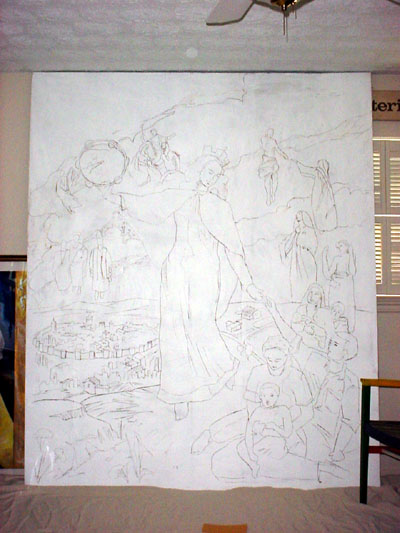
To keep the painting in manageable pieces, the 10' tall work is broken into two panels. Here the upper 8' panel has the design drawn on with brown conte.
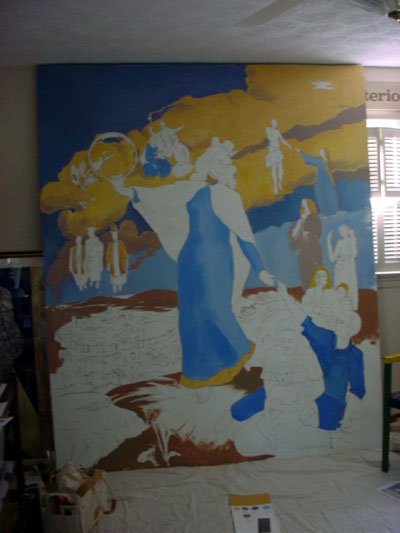
The underpainting in progress. Broad areas of color are laid down to act both as an adherent between the outer painting and the gesso and to define the foundation color for lighter, more transparent detail work. Here all the blue, yellow and brown areas have been laid.
The underpainting is complete
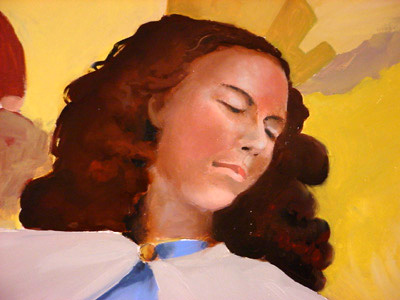
The features of Teresa are developed. We are lucky to have quite a good description of her from one of her contemporaries. Among the desctiption were such curiosities as heavy eyebrows, a thin upper lip and a full lower lip. She was described as exceptionally pretty with long, curly dark hair, which I have elected not to hide behind the traditional headcovering so typical for historical depictions of her. In fact of the 20+ depictions of the saint I found only one source showed the hair loose.
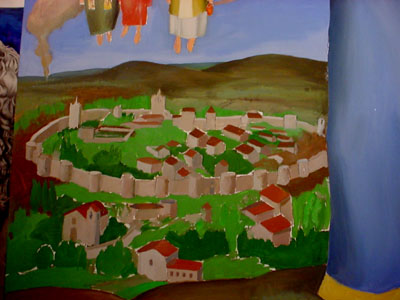
The town of Avila in the background of the painting is starting to be refined, showing red clay tile roofs and predominantly gray stone. My depiction is based on an etching from the mid 15th c.
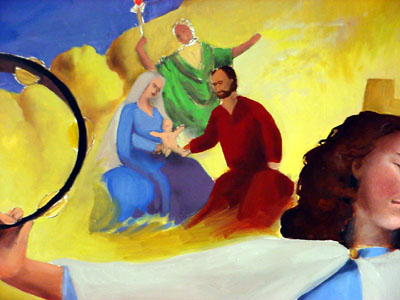
The holy family is being developed
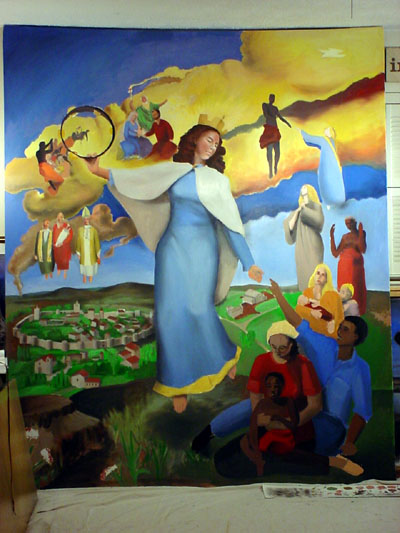
After a major push to bring the painting near completion. 90% of the underpainting is covered. over 50% of the painting is fully developed. The figures in the foreground are roughly modeled and the company of figures to the above left of Teresa are awaiting final detail.
The figures representing the communion of saints, including the likeness of Bishop Child, are complete
The motto is in progress. The characters are outlined in pencil then painted in
The motto on the lower panel is complete
The figures representing the the hopeful, the followers of Teresa, are complete
The upper panel is complete
The frame will be stick-built on site. Here the pieces are primed and awaiting the guilding
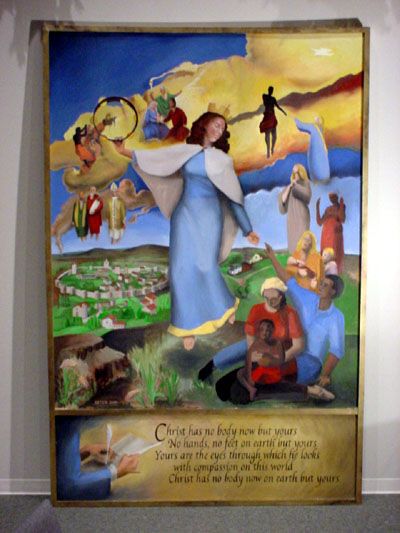
An installation picture with both panels joined with the frame. Awaiting final placement over the rear door of the sanctuary. The finished piece is 10 feet tall.
Bring it HOME.
